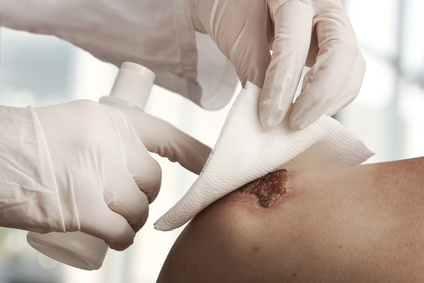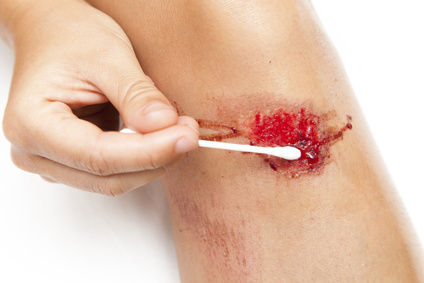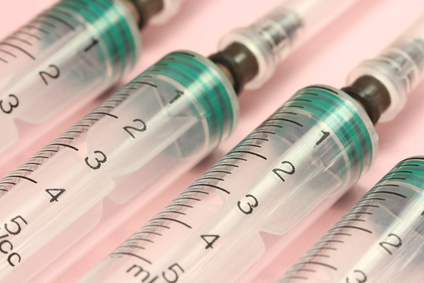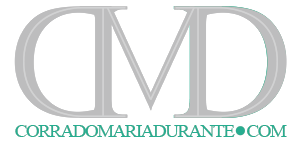Cosa fare immediatamente per detergere e disinfettare una ferita
- Detergere la ferita, per togliere residui e pulirla, attraverso l’irrigazione o il soft graze utilizzando soluzione fisiologica o acqua.
- Disinfettare la ferita, per ridurre ed evitare l’insorgenza di infezioni da agenti batterici o micotici, con le stesse tecniche della detersione ma usando agenti antisettici specifici.

Generally, cleansing is the act of cleaning, of removing, cleanse precisely, while disinfection mean any action aimed at reducing the number of germs: the combination of the two acts, applied in the context of a wound, takes on the complex meaning of wipe away all that hinders the healing and dilute the load of microorganisms that may be present.
The practice of disinfection of the wound suffered the same fate, being characterized by the lack of a shared scientific consensus regarding both the antiseptic agents that the manner and time of application; Furthermore neither nurses nor doctors can rely on international guidelines can settle the legitimate doubts that often beset operators in the daily management of wounds dirty or contaminated.
The D2 procedure is then preliminary to any other operation on the wound since it has the purpose to facilitate the “visibility” of the lesion, in more technical terms cleansing and disinfection prepare the wound for a diagnostic assessment, more accurate and more comfortable for the patient.

The main function attributed to the cleansing is to remove: cellular debris that is loosely adherent, the surface bacterial components, the fluid exudate deposited and possibly residue of previous local dressings; disinfection is for action to reduce:
- lthe bacterial and fungal pathogenic flora nestled beneath the surface layer
- the microbial load, potentially dangerous, in the edges around the wound.
How to make the D2 procedure2
A correct approach to the procedure should take into account three elements:
- technique
- materials
- cleaning agents
The most widely used technique, the one that collects the most support among experts, is represented by Irrigation. It consists in washing the wound with a tool, such a defined pressure, at a suitable temperature and with a specific liquid agent. Summary of the main factors influencing irrigation are:
- the temperature
- the quantity and features of the detergent mean
- pressure and duration of the procedure
Another element to consider is the proper protection of the operator with disposable mask, cap and glasses.

Usually the procedure is performed with a 30-35 ml sterile syringe by applying a needle or a silicone cannula of 18-19 gauge (the latter appears safer and more efficient): a full pressure on the piston produces a jet comprised between 8 and 11 PSI (pounds per square inch).
a lower pressure would only serve to dampen the bottom of the lesion and not cleaning the surface, unlike a greater pressure would be detrimental to the cellular trauma, the negative action on the capillary refilling, and tend to propel foreign debris and pathogens into the deeper tissue. Too much pressure also lead to environmental contamination through the sketches and the aerosol particles from the bottom of the lesion, it should therefore emphasize the importance of wearing personal protective equipment to prevent contamination of the upper air operators by germs on the surface of the wound (eg Staph. Aureus).
The ideal pressure (8-11 psi) roughly corresponds to that produced using a Water-Pik at minimum power; but in addition to pressure the determining factor is the temperature of liquid agent, it can oscillate between 37°C and 39°C. A reasonable temperature exerts a beneficial effect on the bottom and on the edges of the wound by increasing the blood inflow and consequently the local oxygen concentration, resulting also more comfortable for the patient; conversely an inadequate temperature determines a thermal shock of the wound with local vasoconstriction, damage of granulation tissue and negative impact on cell turnover.
The ideal cleaning agent should have the following characteristics: not being toxic nor allergenic, remain active in the presence of organic material, be able to dilute the microbial load, economical and easy storage; the simultaneous presence of all these characters is especially difficult to locate in a single fluid, but we will focus on the analysis of two liquid agents used for the irrigation of wounds:
- the sterile 0,9% saline
- the running tap water
The saline is, in all probability, the cleaning agent applied more in the world, it is isotonic with wound fluid and for that reason it neither donates fluid nor draws it away; this characteristic allows on one hand to fully exercise the mechanical action of cleaning the wound, but on the other hand makes it an expensive product available in the hospital setting.
The Setting is therefore another factor influencing the D2 procedure, just think of the health situation of low income countries where it would be unthinkable to sustain unnecessary costs “only” to manage the cleaning of wounds; tap water (drinking directly or through the use of filters) or sterile after boiling, appears to be the cheapest available liquid agent: however, it is hypotonic compared to wound fluid and thus influence the osmotic tension with possible onset of local edema and patient discomfort.
The scientific literature does not currently offer any evidence whether it is more appropriate to apply tap water or saline solution to cleanse wounds, nor is available a consolidated consensus on the criteria for use of two fluids: certainly in our latitudes the sterile saline is more used than tap water, although the choice is not motivated by a real scientific rationale but only by practical reasons and habit of the operators.
Identified instrument, pressure, temperature and type of liquid agent we have to determine the amount of fluid to be irrigated to achieve the outcomes: I suggest filling the syringe at least 10 times trying to direct the flow in all directions and with different tangent.
Irrigation is the most common practice but not the only one to cleanse a wound, we must mention the “Soft Graze” technique: a gentle rubbing of gauze saline soaked on the wound bed; it does not correspond to “soft debridement” because it does not exercise any force of removal of devitalized tissue, nor even of necrosis;
il Soft Graze "Soft Graze” acts with the same characteristics of the irrigation but with a different tool. This procedure is certainly more influenced by the operator’s skill and its implementation does not follow fixed rules in terms of pressure and temperature, but in the absence of fistulae, tunnels, or extensive undermined tissue reaches the same goals.
Discussing the D2 procedure, is appropriate to introduce the concept of cleansing and antiseptic agent: saline and water do not fight microorganisms on the bottom of the wound and remain excellent fluid for easy cleaning
the synergistic D2 procedure instead requires to irrigate with agents also capable of reducing the number of germs present in the wound bed. This choice, applying the same criteria already mentioned, is extremely functional and effective.
The technique “Soft Graze” may rely on an antiseptic agent that, saturated gauze, will act with dual mode, physical and chemical against germs. The use of an antiseptic solution as irrigant agent is a solution economically onerous but makes much more efficient the D2 procedure amplifying the effects of simple mechanical washing with the chemical action of the solution; in this eventuality should be given important meaning to the application time of antiseptic: after irrigation or “Soft Graze” the solution should be left to act on the wound, the undermined tissue, fistulae or tunnels for at least 10 minutes in order to have the maximum antimicrobial effect.
Antiseptic agents, by type and mechanism of action, however, have a different degree of tissue toxicity:
in my experience, having tested a large number of fluids antiseptic, at various concentrations, to perform accurate disinfection, I was able to highlight strengths and weaknesses of each; since few years I focused on the use of Polyhexanide-Betaine, it appears to be an excellent antiseptic cleanser with excellent tissue tolerance. The Polyhexanide, as irrigant agent or wetting agent, is particularly active in the presence of multi-resistant germs, floating or aggregate (Biofilms).
The D2 procedure, in case of multiple lesions, actually can also be conducted through the technique of Immersion, it consists in washing the wounds with antiseptic solutions diluted wherein the anatomical part affected (sometimes the entire body) is immersed: using cotton gauze or a soft sponge and a gentle stream of water, it cleans the surface of the skin lesions creating a sort of physical-chemical cleansing favored by the hydration-wetting of the devitalized tissue; the technique of immersion is routinely used to manage burns interesting large areas of the body: the direct and prolonged contact with fluids, at body temperature, promotes the detachment of death tissue from the bottom of the lesions.
In summary, the D2 procedure, regardless of the technique used, it is a critical step in the management of acute and chronic wounds, both in hospital and even more in home care.
email me
The site quickly reached a consistent number of daily visits. To thank you, give you a tool for health and well-being and resolve your difficult-to-heal wounds, I offer you a completely free consultation. Vi offro un consulto completamente gratuito.
To book, fill out the form or call 06 899 286
